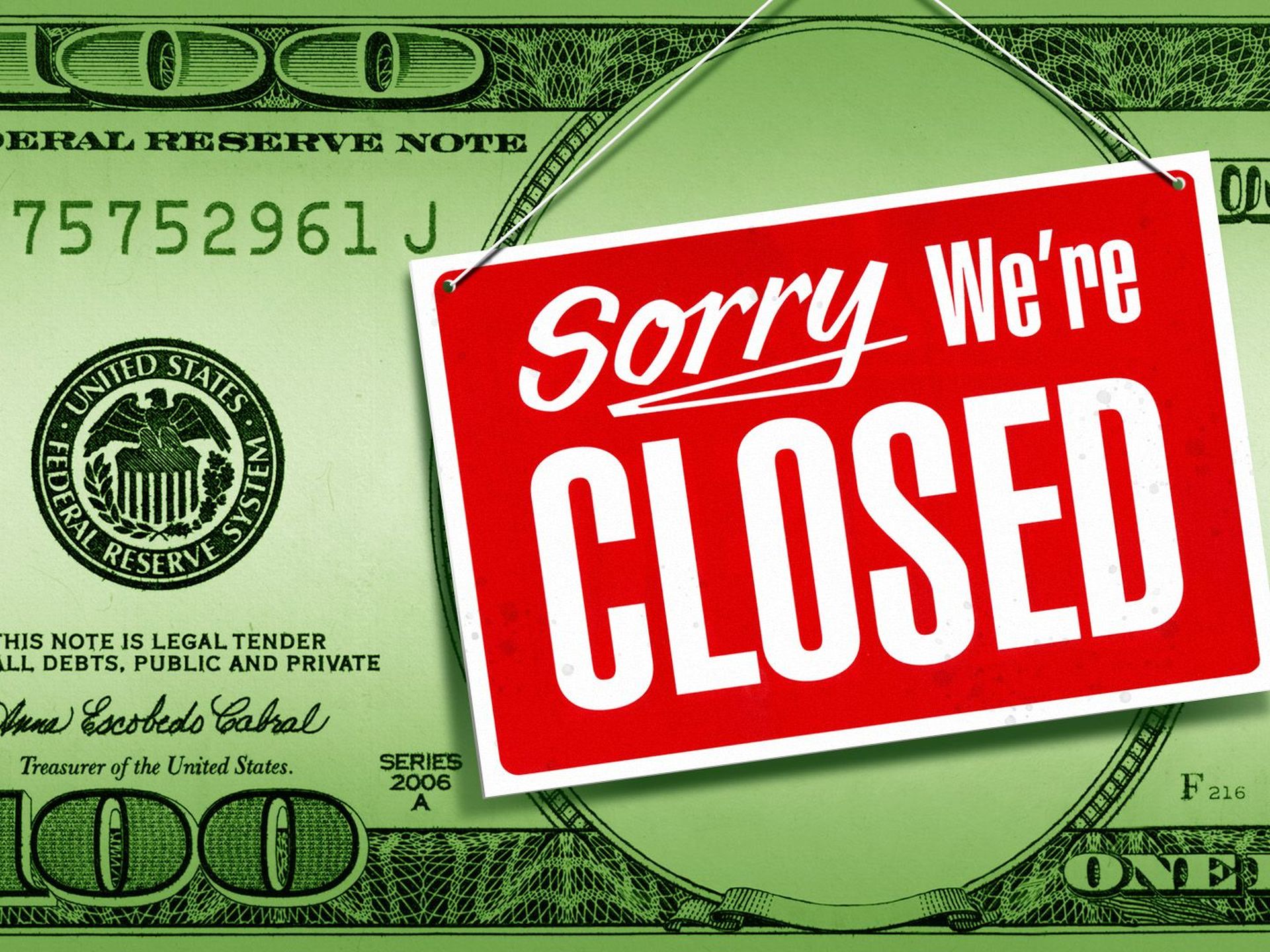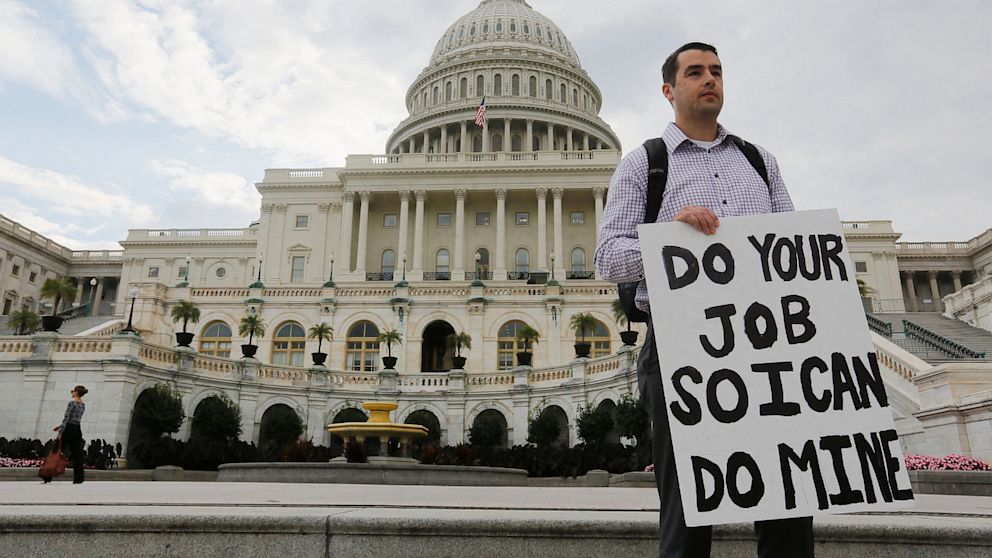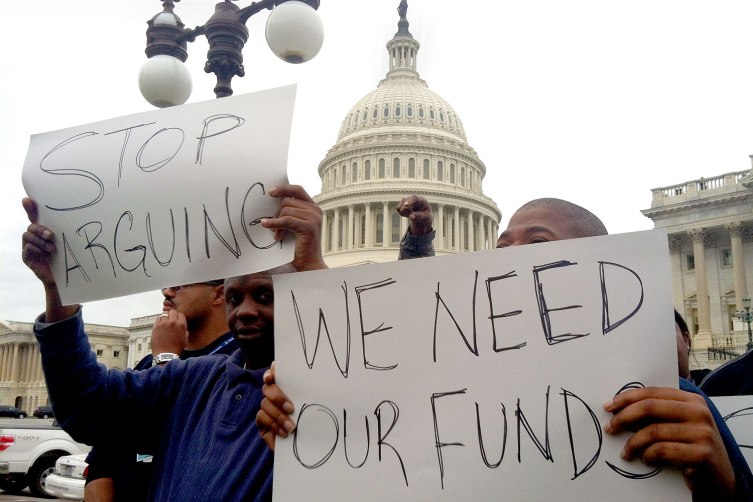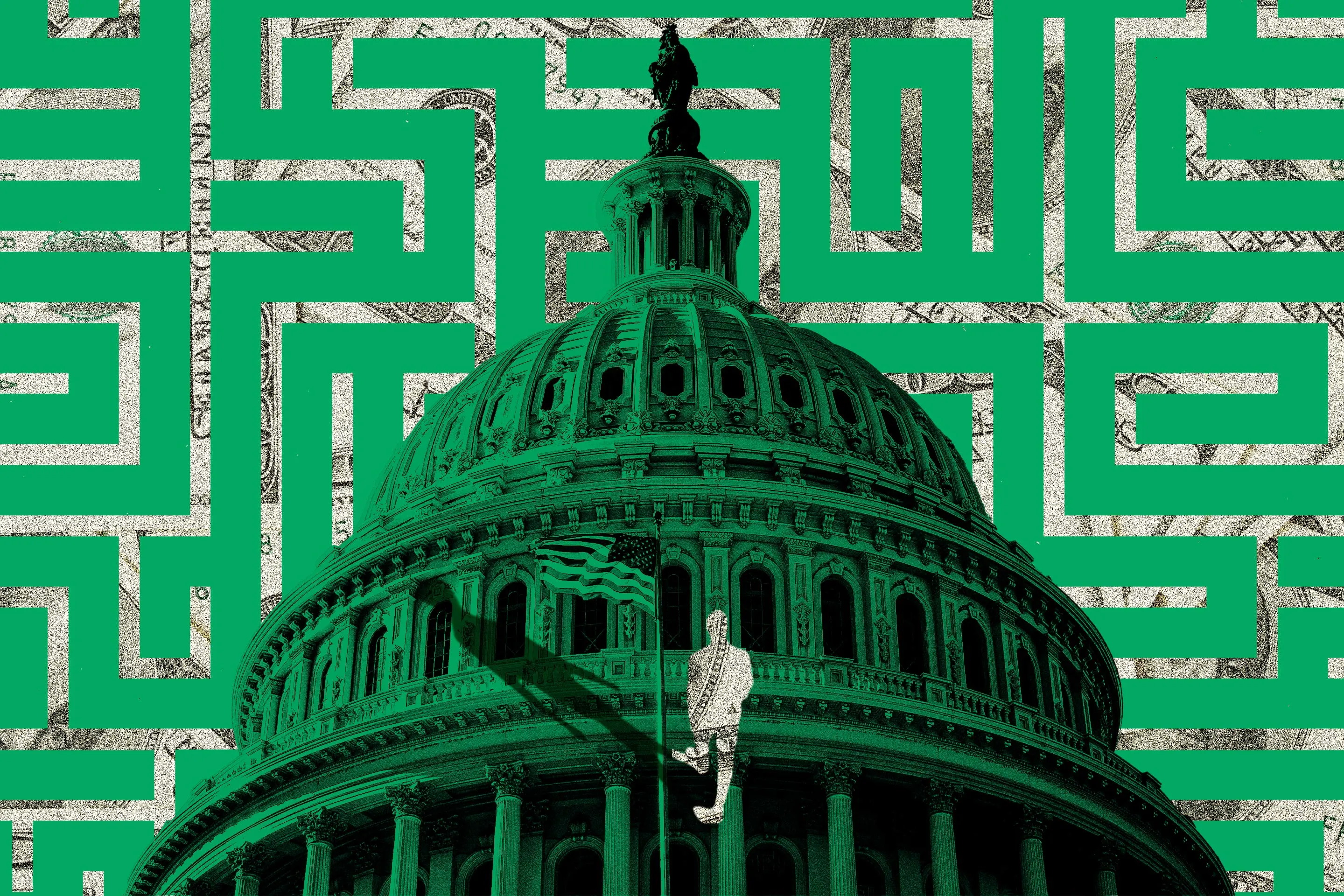The United States Government Is Said To Run Out of Money In Less than 6 Days? What Does A Government Shutdown Mean?
With less than six days left until the United States government potentially runs out of money, the political drama in Washington, D.C. has reached a critical juncture. With the possibility of a government shutdown looming large, the United States stands at the brink of another fiscal impasse. If Congress fails to pass a new spending package or a stopgap measure by October 1st, the government may grind to a halt, causing disruptions to federal operations, impacting federal workers, and affecting the broader U.S. economy. Hence, House Speaker Kevin McCarthy faces a difficult decision – whether to risk a government shutdown in order to preserve his leadership or work across the aisle with Democrats to keep the government funded. This momentous showdown has been building for months, and the outcome will have far-reaching consequences for the country.

The United States Government is at a critical stage as it has less than six days remaining until the government runs out of money aka a shutdown.
Thus, House Speaker Kevin McCarthy has a difficult choice to make; does he risk a shutdown to keep his job, or does he cross his Republican hardliners by working with Democrats?
McCarthy, who has been attempting to appease hardline Republicans within his party, allowed the House to proceed with voting on appropriations bills, even though they are unlikely to pass the Democratic-controlled Senate.
Despite his efforts to unite his conference around a common strategy, time is running out, and a short-term solution has proven elusive.
The impending fiscal crisis is the third major challenge of this congressional session, following the opening week and the debt ceiling negotiations.

Understanding a Government Shutdown
A government shutdown entails the suspension of many non-essential federal services.
Each federal agency is required to devise a contingency plan for shutdowns, which involves employee layoffs and service reductions.
Non-essential services that would be suspended typically include national parks, the Internal Revenue Service’s customer service, and Federal Student Aid assistance (though applications for aid and student loan repayments remain due).
Essential services, such as air traffic control, law enforcement, power grid maintenance, in-hospital medical care, and border protection, would continue unaffected.
However, certain mandatory spending programs, including Social Security, Medicare, Medicaid, and Supplemental Nutrition Assistance Program (SNAP) funding, might experience service reductions or suspensions.
In addition, agencies like the Food and Drug Administration and the Environmental Protection Agency may halt or reduce food and environmental inspections.
The Centers for Disease Control and Prevention (CDC) and the National Institutes of Health (NIH) could also face reduced operations, an undesirable scenario during a COVID-19 surge.
Is the govt shutdown the same as bankruptcy?
A government shutdown is not the same as bankruptcy.
- A government shutdown occurs when the government’s funding authorization expires or when Congress fails to pass a budget or continuing resolution to fund government operations.
1. During a government shutdown, many non-essential government services are temporarily suspended. Federal employees may be laid off or forced to work without pay until the shutdown is resolved.
2. Essential services such as national defense, law enforcement, air traffic control, and certain benefit programs (e.g., Social Security, Medicare) continue to operate.
3. A government shutdown is a result of political disagreements or budgetary disputes within the government. It is a temporary disruption in government operations and does not impact the government’s overall financial solvency.
Bankruptcy:
-
- Bankruptcy is a legal process that individuals, businesses, or even governments may go through when they are unable to meet their financial obligations and have debts that exceed their assets or ability to repay.
Therefore, a government shutdown is a temporary disruption in government operations due to budget disputes, while bankruptcy is a legal process used to address insolvency and financial distress, and it involves a more profound and long-term financial reorganization.

Looming Government Shutdown
The root cause of a potential government shutdown lies in the need for federal agencies to have approved appropriations from Congress to spend money.
What it means is that Congress must pass 12 appropriation bills to fund 12 major federal agencies before the start of the 2024 fiscal year on October 1st; but the path to agreement is fraught with divisions and complications.
- The Fiscal Responsibility Act, signed in June, set a discretionary spending cap of $1.59 trillion for two years.
- While the Senate has passed appropriation bills in accordance with this agreement, House Republicans are pushing for spending levels aligned with the 2022 budget, and they are also incorporating contentious provisions on issues like abortion that are unlikely to gain approval in the Democrat-led Senate.
- Adding to the complexity, the White House is requesting an additional $44 billion in emergency funding for various purposes, including aid to Ukraine, FEMA, and border security.
The Pressure on McCarthy
The situation is fraught with political tension, and the pressure on McCarthy to make the right move is mounting.
Senator Joe Manchin, a moderate Democrat from West Virginia, expressed concerns about McCarthy’s ability to lead effectively in this challenging environment.
On the recent call with the Republican conference, McCarthy pushed for a short-term spending bill that includes funds for border security, hoping to give House Republicans a stronger negotiating position with the Senate.
However, not all members are on board with this approach, as some, like Representative Chip Roy of Texas, believe it would be unwise.
Promises Made, Promises Tested
McCarthy’s leadership has come under scrutiny as he navigates this political minefield.
He has publicly and privately implored his fellow Republicans to find common ground and increase their leverage in negotiations with the Senate.
However, a vocal faction within his party remains resolute in their preference for a government shutdown over cooperation with Democrats.
To complicate matters further, former President Donald Trump has weighed in, encouraging Republicans to oppose any spending bill that doesn’t defund the Department of Justice or investigations into his own conduct.

Different Perspectives on a Shutdown
Some Republicans argue that a government shutdown is not the apocalyptic event it is often portrayed to be.
For instance, Representative Andy Biggs of Arizona sees it as a “pause in non-essential federal spending.”
However, the consequences of such a shutdown can be far-reaching, affecting everything from federal employees’ paychecks to critical government services.
Schumer’s Countermove
As the clock ticks down, Senate Majority Leader Chuck Schumer has introduced his own short-term spending bill. This bill may include provisions for disaster aid and additional funding for the war effort in Ukraine, which hardline House Republicans oppose.
McCarthy is now faced with a difficult choice: whether to bring Schumer’s bill to the House floor, amend it, or ignore it altogether, each option carrying its own set of risks.
)
A Race Against Time
With the House returning to session and votes scheduled for various spending bills, the urgency of the situation is palpable.
However, even if House Republicans manage to pass these bills, they must still pass seven more, negotiate with the Senate, and get them signed into law before the looming deadline.
The Last Government Shutdown
The United States has witnessed 21 government shutdowns since 1976, with the most recent one occurring from December 22, 2018, to January 25, 2019, lasting a total of 34 days; however, most past shutdowns have been of shorter duration.
Government shutdowns come at a considerable cost, affecting federal discretionary spending and reducing Gross Domestic Product (GDP).
For example, the 2018-2019 partial shutdown incurred an $18 billion cost in federal discretionary spending and led to an $11 billion reduction in GDP, according to the Congressional Budget Office.
A Fiscal Close Call
The looming government shutdown follows closely on the heels of another fiscal crisis earlier this year when the U.S. came perilously close to defaulting in June when it faced a debt ceiling crisis.
The Treasury Department took extraordinary measures to continue funding essential obligations while suspending payments on certain accounts.
President Joe Biden and House Speaker Kevin McCarthy fortunately reached an agreement on the “Fiscal Responsibility Act of 2023” in June to avert default.
However, the threat of default is far from resolved, and the situation emphasizes the need for a more permanent solution to the debt ceiling issue.

The Consequences of Default
A nation defaulting on its obligations will likely have severe consequences.
A default could also lead to higher interest rates, stricter credit requirements, and accelerated economic recession.
Finding Solutions for the Debt Ceiling
While the threat of default has been temporarily averted, it remains a recurring issue.
Therefore, to avoid last-minute crises in the future, Congress must act promptly to raise the debt ceiling before reaching the X-date, the date on which default would occur.
While other options have been proposed, including the minting of a trillion-dollar platinum coin and the issuance of consol bonds; however, the simplest and most feasible solution remains for Congress to reach a bipartisan agreement and for the president to sign it into law.
The Last Bit, As the countdown to a potential government shutdown continues, the stakes have never been higher for Speaker Kevin McCarthy and the U.S. government.
The choices made in the coming days will not only determine the fate of government funding but also have far-reaching implications for the country’s political landscape.
Whether the two parties can find common ground in this critical moment remains uncertain, but the clock is ticking.




